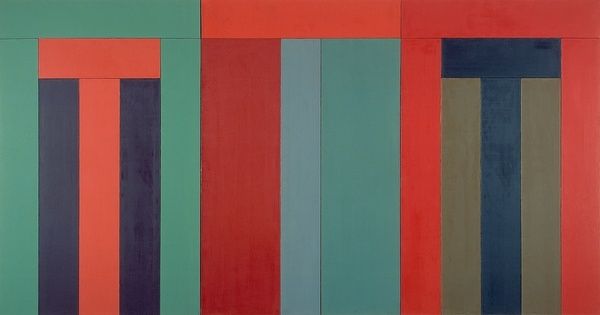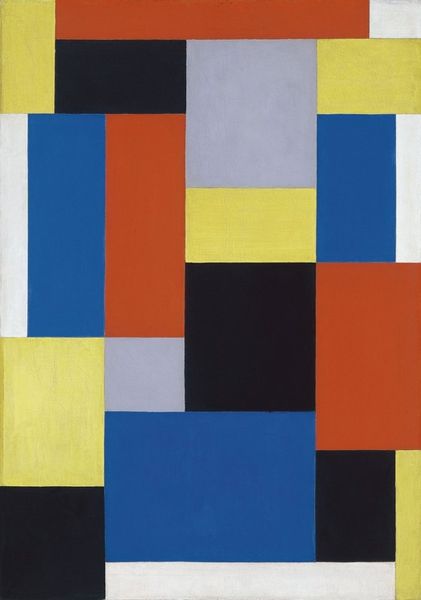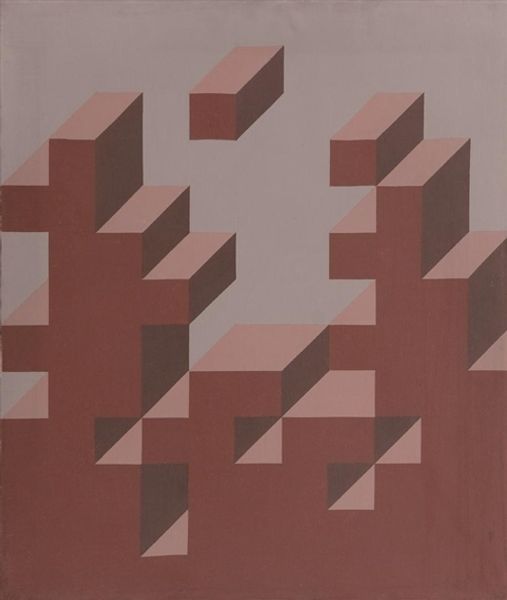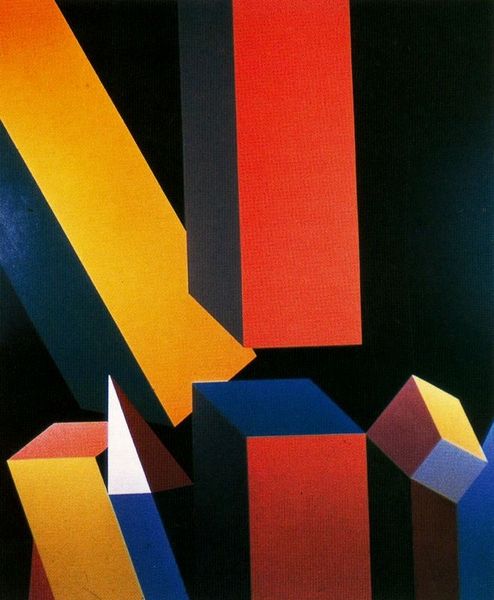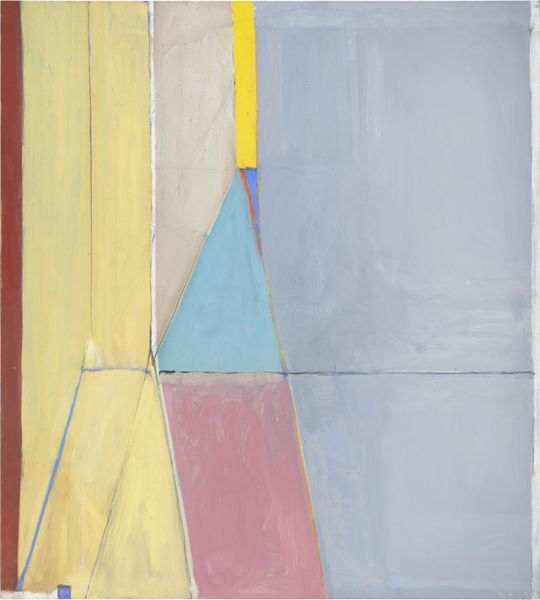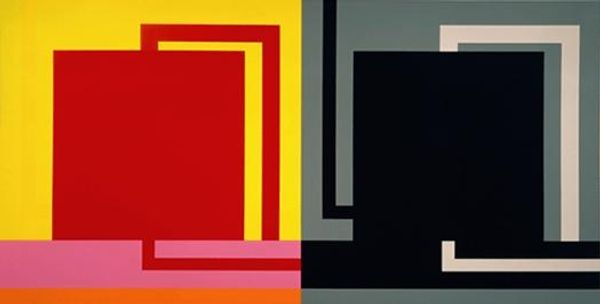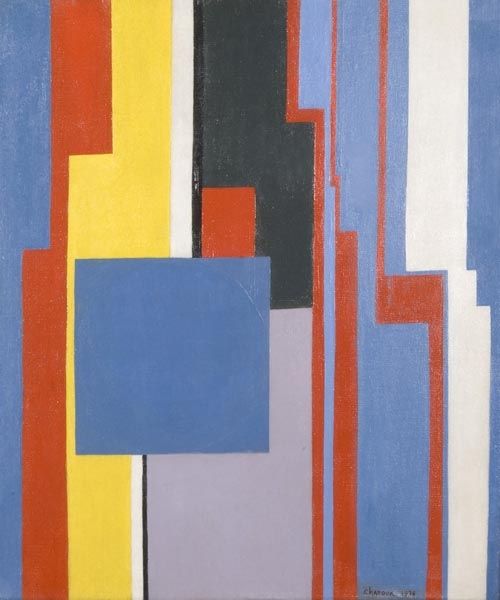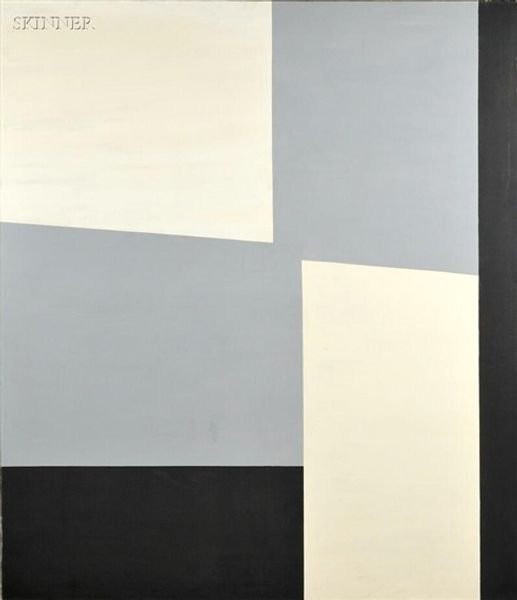
acrylic-paint
#
abstract-expressionism
#
abstract painting
#
perspective
#
acrylic-paint
#
acrylic on canvas
#
geometric-abstraction
#
modernism
Copyright: Eduardo Nery,Fair Use
Curator: This is Eduardo Nery's "Espaço Absurdo," painted in 1970 using acrylic on canvas. What are your initial thoughts? Editor: I find it unsettling. It’s like looking into a skewed reality, a glitch in the matrix perhaps. The gold, red, and blue create a stark, almost jarring contrast. Curator: That feeling of unease is precisely what Nery aimed to evoke. He was deeply engaged with modernist ideals but pushed them to question perception. We can understand this work as a critical commentary on the perceived stability of structures during a period of social and political turbulence. The steps almost mock our desire for logical progression. Editor: Interesting, the repetition of the cubes, their insistent, but ultimately illogical arrangement—it's quite unnerving, especially framed within that gold space. Considering its making, it feels postmodern in its undermining of certainty, defying conventions, yet I agree with its modernist leaning when investigating form, surface and geometric order. How does the political environment reflect into his choice of "Absurd space" for the painting title? Curator: The title “Espaço Absurdo,” or Absurd Space, suggests a critical stance. Portugal at the time was under the Estado Novo dictatorship. While seemingly abstract, we can read this work as reflecting the absurdist climate that totalitarian regimes produce, especially on the idea of freedom of thought. This artistic choice speaks to a silent form of protest. Nery challenges our expectations of space, hinting at the constricting ideologies that were in power. Editor: And there's a fascinating ambiguity. It’s both undeniably present – bold, almost aggressive colors and forms – yet creates this paradoxical depth. I read it as a spatial and even, psychological maze. Are we meant to follow those cubes or be wary of them? It could be read in a cultural dialogue of escapism, even a metaphor for resistance, within that particular political context. Curator: Absolutely, I concur. "Espaço Absurdo" holds many possible, nuanced interpretations and still invites us to reflect on the ever-present, fluid interaction between art and sociopolitical reality. Editor: Yes, and sometimes what appears abstract speaks volumes, no?
Comments
No comments
Be the first to comment and join the conversation on the ultimate creative platform.
